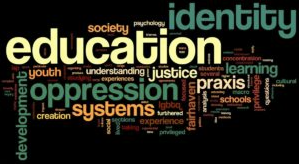Blog #9
Youth Work is..........Identity This weeks reading really stuck out to me because it is such an important topic in todays world. There are so many times where individuals aren't focused on their own identity rather than focusing on what makes them fit in with a group. It is so important for individuals to find themselves and identify what makes them unique. Often times identity is over looked in many school settings, but I think that it is something that youth need help with. They need to be able to explore what makes them unique to themselves, but also what unique identities they have from their families. Who Am I? This question can be one of the hardest questions to ask an individual. If you asked me this question prior to this year, you would have gotten a surface level answer with barely any insight into why I answered the way I did. This was all based on comfort level, and not wanting to challenge myself to think dee...


